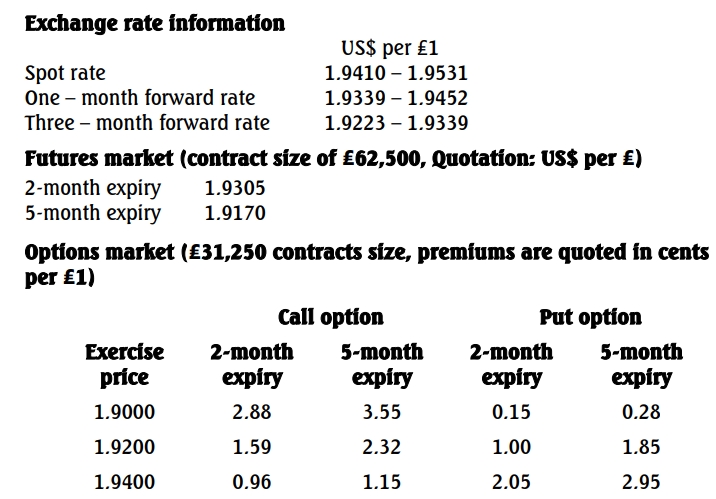- 12 Marks
FM -NOV 2024 – L2 – Q3a – Foreign Exchange Risk Management
Explaining foreign exchange risk types and calculating the impact of forward contract hedging.
Question
a) Dadisen PLC manufactures and sells pharmaceutical products in Ghana. It imports a significant portion of its pharmaceutical inputs from the USA. However, it only sells its products in Ghana. The company is considering establishing its foothold in The Gambia, Liberia, and Sierra Leone markets.
i) Dadisen PLC reports its results in its home currency. It pays for its purchases from the USA in US dollars but receives payments for its sales in Ghana cedis. All sales from Gambia, Liberia, and Sierra Leone are expected to be transferred into US dollar accounts each week. On average, the company generally takes 90 days to pay its suppliers and receives payment from its debtors within 60 days. In paying its suppliers, the company relies on bank overdrafts at an annual rate of 10%.
Over the last few years, the company has found that sales have been quite predictable, and it has been possible to plan sales levels and purchases of goods in advance. However, the company does not have adequate management skills for its foreign currency exposure. As a result, the company has reported exchange rate losses since 2020. The company is currently considering whether the forex exposure could be better managed.
Required:
Describe the following types of foreign currency exposure, giving examples of how they could impact the financial statements of Dadisen PLC:
- Transaction risk
- Translation risk
- Economic risk
ii) The company estimates that it will need to borrow $1 million in three months’ time for a period of six months but is concerned about expected fluctuations in the exchange rate. The company is considering hedging this exposure using a currency forward contract. The company’s banker, GCB, has agreed to sell the US dollar forward for 9 months at GH¢17 to the dollar.
Required:
Compute the effect of the currency forward transaction on profitability if the spot exchange rate in 9 months is:
- GH¢22
- GH¢15
Find Related Questions by Tags, levels, etc.


